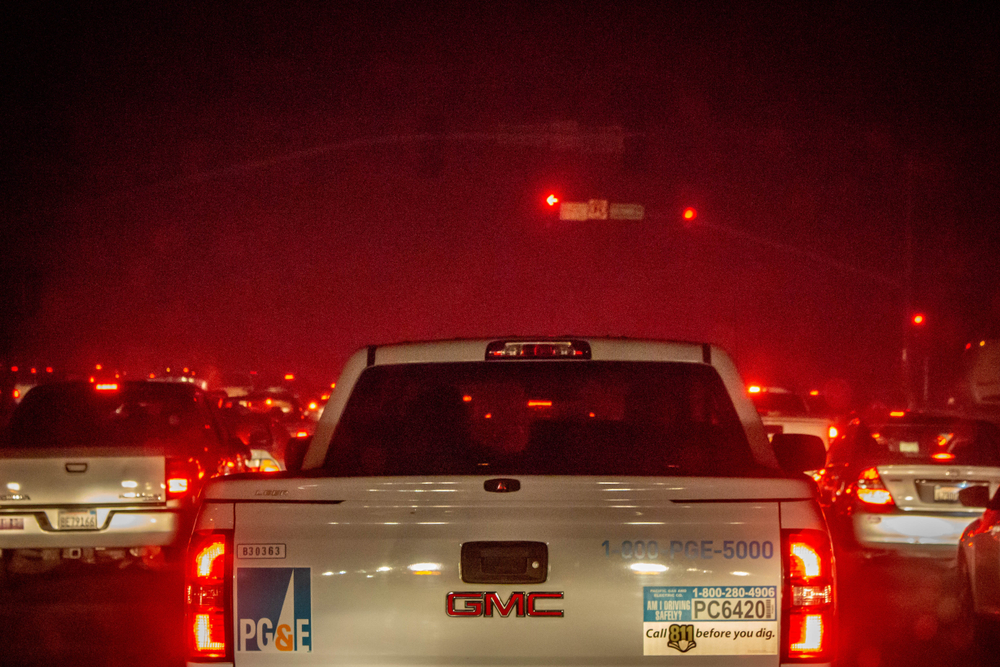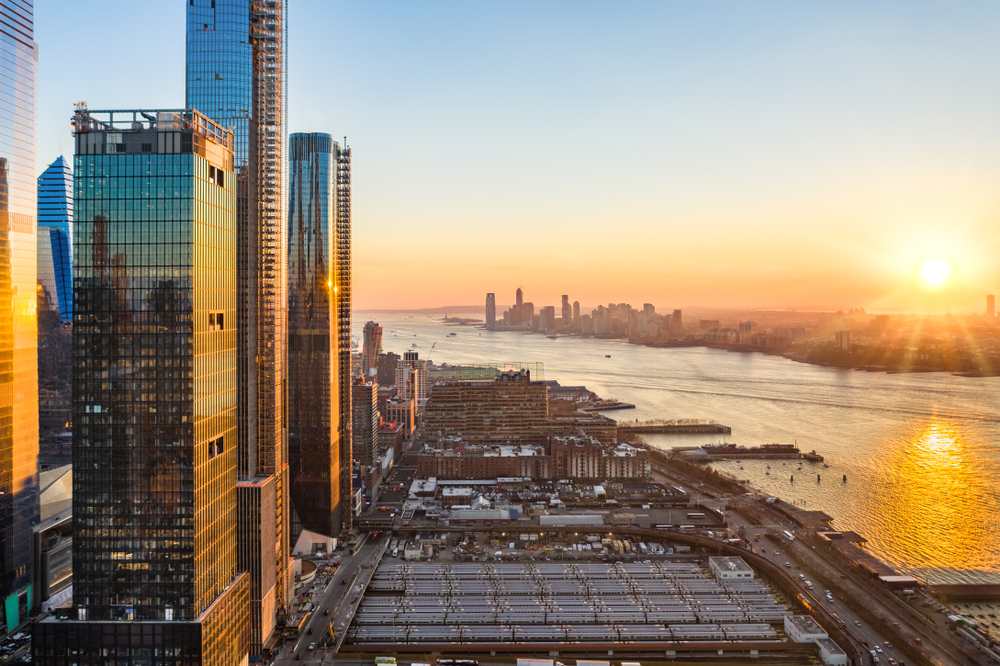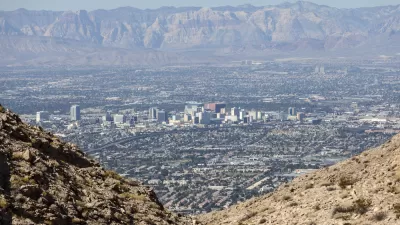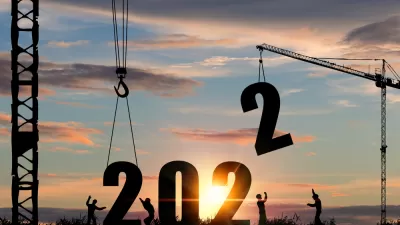A few ideas about what to watch in the world of planning in 2019. We only use the word Trump once.

Before we start looking at the big urban planning trends to watch in the coming year, the "Urban Planning Trends to Watch in 2018" post is worth a quick look back for lessons in what emerged and what evolved in the world of planning and development from the previous year.
The Dismantling of Federal Bureaucracy – If you're reading this post in the future, I write this dispatch from the government shutdown of 2018-2019, a few days after President Donald Trump's historically embarrassing speech on an imagined immigration emergency and his willingness to hold the country hostage to extract ransom to fund an unnecessary border wall. 2018 could have been better: We waited months past the due date for transit funding while projects hung in the balance. Numerous cabinet members and senior staffers were unceremoniously fired, quit in scandal, or entered their jobs through less-than-Constitutionally-sanctioned means. 2019 is off to a distressing start, thanks to the government shutdown that began last year. Air traffic controllers and other federal employees got their first $0 paycheck today and renter's assistance programs are at risk, threatening eviction of thousands.
State Control Vs. Local Control – The power struggle between state and local governments intensified on issues like housing and infrastructure, with a surprise appearance from HUD Secretary Ben Carson and visits to Louisiana, Tennessee, and neighborhood food vendors. As I wrote at the beginning of 2018, "The winds of political change can easily blow an ideological hard-liner to either side of the state versus local control debate." Always a good question to ask: Which way is the wind blowing today, and is it blowing with me or against me?
Whither Public Transit – The news only got worse for public transit (with two notable exceptions: Richmond and Seattle). While the saga of New York MTA's planned closure of the L Train resembled the plot of an M. Night Shyamalan movie, ridership continued to drop, car ownership climbed, and transportation network companies poached more rides. The story of transit in 2019 so far: "closed for maintenance," not just in New York City, but also Los Angeles and Boston. In my concern for public transit, I completely failed to predict one of the trends that defined 2018: the dawn of the age of electric scooters. At the beginning of the year in 2018, few people did. We have some catching up to do with scooters, as you'll see below. I've reframed my thinking about this trend to focus a little less about saving public transit, and more on saving the planet from cars.
Now onto this year's trends to watch, which will not attempt to predict the future like the World's Fair in 1939. Instead, I'll discuss some of the trends I'm already paying close attention as aids in tracking the emergence of new ideas, and the evolution of old ideas.
Land Use Regulations and the Crises of the Era

Climate change and a lack of safe and affordable housing are two of the most pressing emergencies in contemporary times. While these crises have been metastasizing for much longer than anyone cares to admit, they are also most certainly trending in the wrong direction. The most important question of 2019 will be whether the constant, tragic reminders of these two crises will be enough to inspire the kind of drastic new approach to the built environment required by moral imperative.
At the beginning of 2019, the United States is still ambivalent about the role of land use regulation in addressing these crises. Regarding climate change, discussion about land use is conspicuously absent, a neglect that ensures the entrenchment of the nation's worst environmental offenses. Regarding housing affordability, 2019 is poised to be a year of tremendously significant progress away from the status quo.
Discussions about climate change policy have struck a new chord in recent weeks with the "Green New Deal" championed by a new guard of congressional leadership. The Green New Deal has given the subject of climate change a foothold in Congress for the first time in years. Those who lived through the failed promise of democratic control of the federal government in the first two years of the Obama administration have waited a long time for comprehensive leadership from the federal government on the subject of climate change.
The Green New Deal also provides the latest example of the lack of understanding about the role of land use regulations in housing affordability and climate change. So far, the Green New Deal lacks any specific land use regulation suggestions. Planners realize land use regulations can be a key tool in mitigating climate change, achieving environmental sustainability, and encouraging shared economic prosperity. Getting land use wrong, however, is how we ended up in the current crisis.
Alex Baca, engagement director at the Coalition for Smarter Growth revealed on Twitter that the Green New Deal in its most realized, current form contains no mention of the words land use.
*ctrls + fs for land use, sees nothing, closes window, pours drink* https://t.co/iDkl8y8QLk
— bay area feelings-haver (@alexbaca) December 28, 2018
Greg Carlock, one of the authors of the Green New Deal earliest draft, responded to say that the plan dealt with "forest, wetland, agriculture, and soil."
"Certainly could have added more on urban sprawl, but that's also a local issue but tied to regional planning considerations," writes Carlock.
After programs like the interstate highway system, the Home Owners' Loan Corporation, and the federal Property Tax Exemption created some of the most egregious environmental and social justice mistakes of the 20th century, taking the federal government out of the equation now threatens to cement the legacy of these errors for perpetuity.
More recent years have also provided substantial evidence that a central land use authority can, and must, have a powerful role in land use regulations that both prevent and adapt to climate change. The first legislative order of business after California approved the landmark Global Warming Solutions Act (AB 32) in 2006 was to supplement that wide-ranging bill with the Sustainable Communities and Climate Protection Act (SB 375) in 2008. SB 375 required Metropolitan Planning Agencies to create and implement a Sustainable Communities Strategy; failing that task would risk forfeiture of infrastructure funding from the state. Thus, SB 375 achieves its primary goal of coupling environmental and land use outcomes, with co-equal benefits of emission reductions and more efficient development patters.
SB 375 emerged from the optimistic years of the early Obama administration, empowered by cause that built behind An Inconvenient Truth. Now, after years of inaction and waning resolve, the political causes of climate change seem less driven by optimism and more from a sense of rising crisis. In California, several years of massive wildfires and unprecedented destruction of neighborhoods and communities have people taking about fire-prone areas and the wildland-urban interface in stark terms. The state of North Carolina, recently taking denial as its official climate change policy (perhaps not as much as South Carolina, Texas, and Florida, though), has begun to rethink that position after a series of catastrophic hurricanes and protracted flooding events. Nearly half of North Carolina Republicans surveyed in a recent poll conducted by researchers at Elon University said they support incorporating findings from climate-change scientists into local government planning. Three-quarters of respondents said real estate development should be restricted along flood-prone areas.
In 2019, climate change action, and questions about the effectiveness of future climate change action, must be measured in urban growth boundaries, flood insurance maps, and reduced Vehicles Miles Traveled (VMT). Big talk and subsequent capitulation won't suffice. (I'm reminded of the implementation of VMT as the legal metric of environmental impact in California, which buckled under pressure from the Southern California Association of Governments.) The built environment will eventually render the failures of compromise.
Which segues nicely into the other crisis of the era: the lack of housing affordable to a range of incomes. Here too, land use regulation must play the central role, and the built environment will provide an archaeological record of the moral failures of inaction. Judgment is already here, apparent in the increasing number of people living on the streets and the obvious inequities of the housing market.
Some cities and states are already begun operating in crisis mode, by approving massive reforms of planning approaches that defined the practice of growth management and urban planning for a century. Only a crisis could have produced legislation to legalize accessory dwelling units throughout the most populous state in the nation, or end single-family zoning for the entire city of Minneapolis. Only a crisis could have inspired San Francisco to completely repeal parking requirements. If the state of Oregon raises the stakes by ending single-family zoning for the entire state, as proposed by draft legislation, it might just be that we're on the other side of a red line. Utah, a state with mostly Republican political leadership but a tradition of progressive housing policies, is also considering sweeping land use regulation reform to counter the crisis of housing affordability. In California, a state where progressive ideals don't always reconcile with the conditions on the ground, the newly elected governor recently threatened to withhold a key pot of transportation funding from cities that don't meet housing goals. Again, these are crisis measures.
Still, comprehensive plans and zoning reform only go so far. Sometimes, zoning changes are made to look good in press releases, when everyone knows the market can't produce developments under those conditions. San Francisco, for instance, might be in the process of finding out how much mandatory inclusionary zoning is too much. Again, big talk and subsequent capitulation won't suffice. The crisis response will be measured, eventually, in results.
In 2019, measure the effectiveness of the housing affordability crisis response in terms of changes to the hypothetical building envelope: Is single-family zoning spreading or contracting? (Check out this blog post by Alfred Twu with snazzy renderings and infographics for an illustration of what 25 percent more housing in the state of California looks like with infill, not greenfield, development.) Are parking requirements becoming more or less restrictive? Do building heights reach taller, and do densities allow more units per square foot?
Eventually, we'll have to ask the more substantive question about the reality of what these reforms have produced: Are approved zoning and housing policies producing the kind of transit and land use synergies necessary to meet the co-equal needs of climate change and housing affordability, or have approved reforms been more effective at scoring public relations points than achieving stated results?
The crises of the times will continue in 2019, that much is sure. Responses and outcomes are less sure.
Can Multi-Modalism Rebound?

At the beginning of 2018, almost everyone failed to predict electric scooter share as the potentially game changing transportation technology of the future—emphasis on the word potential. There is still so much to figure out about how to fit scooters into the public realm and ensure the safety of these new, relatively vulnerable road users.
The questions to ask of scooters at the end of 2019, as an indicator of their ongoing potential as a viable and popular alternative to single-occupant automobile trips, are as follows:
- Has the operational footprint for electric scooter share companies increased or decreased, spreading into new cities and new neighborhoods or contracting instead? Have injuries and collisions increased or decreased?
- Are electric scooters enabling and encouraging rides on public transit, or replacing rides?
- Has electric scooter adoption spread to bike and e-bike adoption?
For years now, the media has been pushing a narrative about potential changes in transportation choice because of the demographic change represented by the Millennial generation. What if all that potential only paved the way for Uber and Lyft? While ride-hailing apps are more and more popular, bike commuting is down, transit ridership is down, car ownership is up, and car dependency is up. Private, on demand shuttles tried and failed to make a splash. Self-driving cars will not save the world anytime time soon.
Electric scooters are the only light at the end of the car-oriented tunnel. If the future is destined to be multi-modal, it's time to making space for the one non-automotive mode that seems to have captured the public's attention before it's too late (and the end of the 2019 might already be too late).
Mega-Projects Meet the Tech Industry

Now, a decade removed from the recession, budgets are finally catching up to ambitions, and skylines are creeping, um, skyward.
Mega-projects are in the development pipeline in cities far from the island of Manhattan. There are also mega-projects backed by private development money in the works in Brooklyn and Chicago, and price tags are clearing $1 billion in Cincinnati, Atlanta, Pittsburgh, Austin, Frisco, and Los Angeles.
Mega-projects these days have a decidedly different quality than in the pre-recession days. Ostensibly, contemporary mega-projects manufacture cosmopolitanism through experiences, rather than commodities. But there are also technological elements included standard with tremendous potential to disrupt the way cities and citizens interact.
The potential for technological innovation to be deployed at scale in cities all over the world mean tech companies are also taking a larger and larger role in planning. The role tech companies are looking for goes well beyond providing new software for GIS, data visualization, or scenario planning. Tech companies are taking control of the traditional responsibilities and skillsets of planners.
Look no further than Toronto for the leading example of tech's emerging role in urban planning. Sidewalk Labs, a subsidiary of Google parent company Alphabet, is reconceiving a waterfront district known as Quayside from the ground up. While the city, more specifically Waterfront Toronto, is a partner in the project, Sidewalk Labs is taking the lead, for better or for worse.
The "for better" benefits of "smart city" technology could mean efficiencies in operations that could, theoretically, lead to greater efficiencies, lower costs, resilient infrastructure, and equitable access to facilities and resources.
"For worse" could mean location data and private information sold to the highest bidder—surveillance deployment out of George Orwell's worst nightmares—and a new layer of corporate sheen over everything in the public and private realm. Sidewalk Labs seems aware of these dystopian outcomes, and is promising new forms of data security with its new forms of data extraction.
For a leading example of the line that mega projects are walking between "city building" and "technology-enabled profit making," consider Hudson Yards in New York City, described as the most ambitious "Smart City" project in the world. Shannon Mattern took a deep dive into the technological ambitions of Hudson Yards for Places Journal in 2016, calling it "the nation’s first 'quantified community,' a 'fully instrumented' testing ground for applied urban data science."
Throughout Mattern's exploration loom two familiar characters, with nascent and overwhelming powers: machines and corporations. Yes, machines and corporations have always played a powerful, central role in the funding and building of cities and infrastructure. But the developers of Quayside and Hudson Yards, and all the other billion-dollar-plus mega-projects around the United States, are walking a new kind of line between better and worse.
And the role for planners in this new world is very much in question. What role will planners have left in the development process once large tech companies turn machine learning and advanced sensors loose on the planning process?
For now, planners still have a role in checking the evolution of this trend and reporting their findings to the public. To what extent do mega-developments represent corporate concerns masquerading as urbanism? To what extent are "smart city" projects implementing new forms of surveillance rather than finding new tools for a shared prosperity?
These aren't questions of a new NIBYism, but questions of an old humanism.

Planetizen Federal Action Tracker
A weekly monitor of how Trump’s orders and actions are impacting planners and planning in America.

Chicago’s Ghost Rails
Just beneath the surface of the modern city lie the remnants of its expansive early 20th-century streetcar system.

San Antonio and Austin are Fusing Into one Massive Megaregion
The region spanning the two central Texas cities is growing fast, posing challenges for local infrastructure and water supplies.

Since Zion's Shuttles Went Electric “The Smog is Gone”
Visitors to Zion National Park can enjoy the canyon via the nation’s first fully electric park shuttle system.

Trump Distributing DOT Safety Funds at 1/10 Rate of Biden
Funds for Safe Streets and other transportation safety and equity programs are being held up by administrative reviews and conflicts with the Trump administration’s priorities.

German Cities Subsidize Taxis for Women Amid Wave of Violence
Free or low-cost taxi rides can help women navigate cities more safely, but critics say the programs don't address the root causes of violence against women.
Urban Design for Planners 1: Software Tools
This six-course series explores essential urban design concepts using open source software and equips planners with the tools they need to participate fully in the urban design process.
Planning for Universal Design
Learn the tools for implementing Universal Design in planning regulations.
planning NEXT
Appalachian Highlands Housing Partners
Mpact (founded as Rail~Volution)
City of Camden Redevelopment Agency
City of Astoria
City of Portland
City of Laramie





























